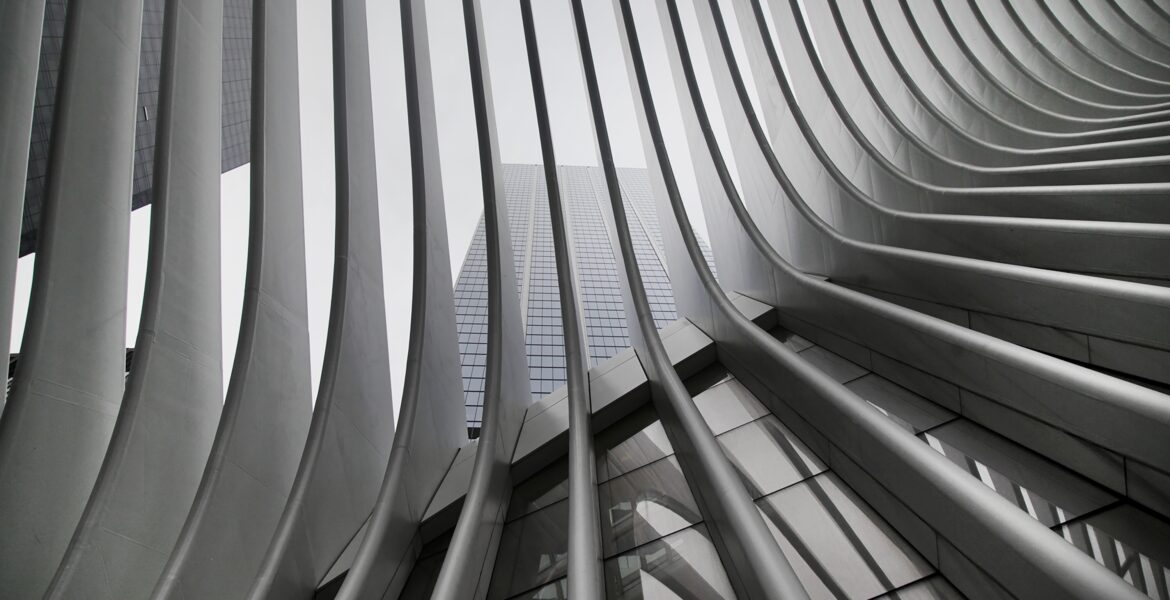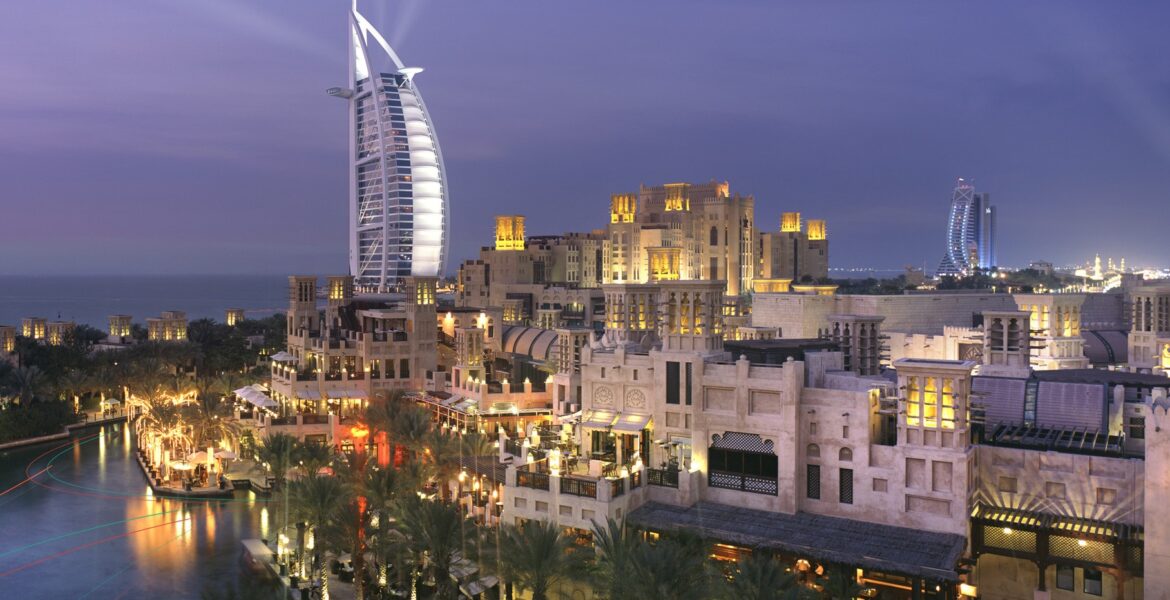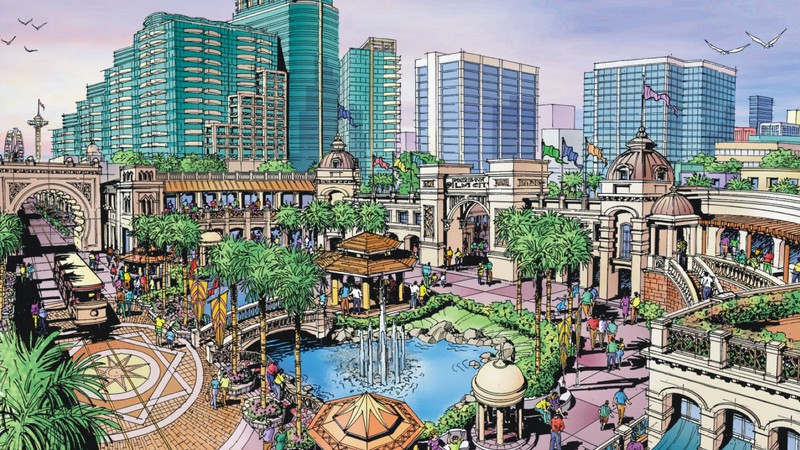
Architecture Tools
If you aspire to succeed as an architect, familiarising yourself with useful tools for architecture design may increase your chances in this field. You may use various traditional and digital tools to enhance your projects, including physical objects and software applications. Reviewing these tools and learning to use them allows you to increase your expertise as an architect. In this article, we explore 11 traditional and digital tools architects may use to improve their efficiency and the quality of their projects. Compass A compass, also known as a pair of compasses, is a technical drawing tool architects use to inscribe arcs and circles. In some instances, they may use a compass to draw lines representing distances, for instance, on a map. Thanks to using a compass, architects achieve a high level of accuracy when creating plans and blueprints. Cutting board or mat Cutting mats are used to protect the surface of your tabletop or workbench from cuts, glue or any other damage that can occur while paper cutting, cosplay crafting, model making or just about any other hobby. Cut, slice, mold and paint on the surface, wipe clean and then do it all over again with the next project. Cutting mats are a versatile “tool” we don’t always notice but are always glad we have. Desk lamp One way to avoid the perils of bad lighting and screen glare is to invest in a desk lamp. The goal of every good desk lamp is to alleviate symptoms of eye strain by reducing the contrast between your screen and the dimness surrounding it Drafting tape For most professionals in the engineering or artistic disciplines, ideas and concepts begin on simple sketches and drafts. The paper on which you work needs a solid and steady environment for rendering your ideas. For architectural and engineering drafts that required some degree of accuracy, the paper needs to be secured to the surface to allow for proper and accurate first renditions. The use of masking tape partially fulfills the requirements of the process, but presents some notable disadvantages. Drafting tape, especially manufactured for this express purpose, increases your efficiency as a draftsperson. Drawing board A drawing board is a type of large multipurpose desk used for sketching, inking, drawing, and technical drawing on a stable surface. Usually, these drawing boards are used at an angle with clips to hold the paper in place. These are usual very smooth boards on which paper is mounted or placed so it doesn’t move and allows for more precision! Measuring tape A measuring tape is one of the most indispensable pieces of equipment for construction professionals. No matter what role you play on the job site, you always need to have an engineer’s tape measure ready so that you can confidently assess the work being done. You may be surprised to learn that there are many ways to use a tape measure in construction, though. Indeed, measuring tapes aren’t just essential — they’re incredibly versatile, too. See how the following three uses can help you get the most out of your laser measuring tape. Mechanical pencil Mechanical pencils are writing instruments that come with lead-advancement mechanisms and use graphite leads that could be extended or retracted using a button. There are many types of mechanical pencils, each offering different advantages and being suitable for different scenarios. Precision cutting knife A precision cutting knife is great for cutting small pieces of paper that you may use in modelling. You may also use them for other arts and crafts, like decoupage or to make stained glass objects. When using a cutting knife, make sure to cut on a self-healing mat. Scale ruler Scale in design refers to the enlarged or reduced representation of a real, full-size object in a drawing or physical model while retaining the proportions of the original. In architecture, we generally reduce the scale rather than enlarge it. A scale drawing or model is like taking the original and shrinking it down proportionally. Sketchbook Architecture schools typically have a sketchbook on their mandatory freshman supply list. In my opinion it is one of the most important tools to help one document, problem solve, practice drawing and archive their career as an architect. Bond paper Bond paper is a high-quality, low-cost option available in various sizes and weights. It is an incredibly diverse paper and is often used for a variety of applications, including architectural drawings, engineering, and landscape design. Bond paper can be purchased with non-reproducible blue lines, which provide a scale of reference for drafting, but are not visible when the paper is scanned or copied. The architectural activity stands to gain greatly from using Architecture tools. It is now easier than ever for architects to gain access to state-of-the-art tools, improve efficiency, and develop groundbreaking designs. They also benefit from the ability to efficiently and cheaply recreate their projects to try them before actually building them. As an added bonus, architects can now put their attention where it belongs: on creating exquisite, functional buildings.

Things That Every Architect Should Know
Architecture is an all-inspiring field with an ability to create striking and purposeful buildings and connect with communities through impactful designs. However, to be a successful architect, it takes time, self-refinement, practice, and persistence, especially after you begin your career. Staying up-to-date with the current trends, polishing your skills, and having industry-specific knowledge are some other aspects you need to refine and stand out in the stiff competition. Besides implementing what you’ve learned from architecture school, here are some essentials you need to work on as an architect. Mathematics plays a vital role in architecture, not because architects need to use complex formulas every day, but because math enables us to establish scientific and quantifiable relationships between different elements. The logical thinking skills developed by solving mathematical problems and equations are directly applicable to many aspects of architectural design. As an architect, you don’t have to be a mathematician, nor do you need to remember advanced concepts like calculus 15 years into your career. However, you must be proficient enough in math to solve problems that require critical thinking and logical reasoning. When we think of architectural concepts, we think of an abstract idea, one that is unchanging throughout the design process. This is not necessarily the case, a concept can be linked to many factors, and can evolve as the design grows. Architectural concepts are the designer’s way of responding to the design situation presented to them. They are a means of translating the non-physical design problem into the physical building product. Every project will have critical issues, central themes or problem essences, and the general issues of designing a building can be approached in a number of ways. Architectural rendering is the process of creating two-dimensional and three-dimensional images of a proposed architectural design. The goal is to illustrate a lifelike experience of how a space or building will look before it is built, accurately representing design intent. There are three main benefits of using 3D rendering software for architecture projects: Effective communication, fresh perspectives, and enhanced teamwork have created some of the world’s best projects. People who can communicate their desires, goals, and wishful outcomes are game-changers, and those people are valuable for any architectural company. It’s hard to talk about where you could be in 10 or 20 years. However, focusing on mastering your communication skills while you’re still young and improving intellectually, will make you ideally suited for future leadership positions. Learning from architecture about different periods is critical. The concepts of modernism, structuralism and contemporary styles are often inspired by architectural heritage. Traveling around to explore mesmerizing architectural constructions is an excellent way to get inspired as most modern concepts, designs, and ideas use a framework similar to these historical marvels. Architects are known to be creative and provide practical solutions in terms of design. Traveling more often to these places will increase your creativity and let you tap into new ideas and approaches. Staying up-to-date with the current laws and regulations about constructing buildings is necessary. Knowing these regulations will assist you in finding out information like the size and number of windows you could install in a building. Only a few construction laws are directly related to the architect’s work but knowing this information will surely improve the way you design buildings. Besides the things mentioned above, plenty of other skills can be honed like practicing time management, following a code, and focusing on providing quality services will always aid in making an impact through your designs.

A brief history of architecture
Architectural history is the study of building through the ages. It comprises architecture and architectural styles ranging from pre-ancient civilizations to contemporary architecture. A subject in its own right, the study of architectural history forms an important component of an architect’s education, although it is a subject that is also accessible to those outside mainstream architectures. Architecture is a by-product of human existence and every age has its own distinct architecture, whether that is defined by prevailing ideas, construction materials, technology or new building types. The study of architectural history, therefore, is not just about a study of the buildings themselves but also the conditions – social, economic, political and material – that influenced those buildings. It also involves the study of stylistic and spatial expression. Why an understanding of architectural history is important? Knowledge of architectural history gives an understanding of the ideas that were important to and shaped past societies. A building can reveal much about the society that produced it. For example, a tall building would be tall for a reason: what idea did it express that required such height, usually at great expense in terms of cost, not to mention the lives lost to achieve it? Gothic cathedrals were the tallest buildings of their day because religion both ordered and regulated society. Today, the tallest buildings are usually office buildings, an indication of how important commerce is to the modern world. Why did some medieval houses include a jetty (a small projection or overhang) at the first and sometimes second floor levels? The reasons are bound up not only with gaining a little more living space but also about conspicuous consumption, an ostentatious feature to express the owner’s wealth and prestige. Medieval windows and stained glass are typically characterized by small glass elements held in place by lead cames. This was because glass was not only very expensive but also because it could not be manufactured in large sizes. The gardens at the 17th century Palace of Versailles just outside Paris follow the then French style of being highly formal and ordered, expressing a mastery over nature. This was an important concept in an age of enlightenment when great progress was made in philosophy and the sciences, and architects and designers were keen to express such notions. The Origins of Architecture Architecture came from the Latin word “architecture” or from the Greek word “arkhitekton.” Arkhi meaning “chief” and tekton meaning “builder.” The product of architecture are often buildings, and historical buildings are usually considered achievements in architecture. Architecture, however, is a general term. It can also mean the physical structure of buildings; the study, science, and art of designing buildings and also structures that are not buildings, or software; the method of designing and construction of buildings; and the practice of offering or rendering design services by a professional architect. Architecture is not just about the design and construction of a building, but also the space and ambiance of the structure. It also considers the social and environmental impacts of a building. Aside from this, it also includes the practical aspects of the construction of a building, such as scheduling, budget, administration, and the documentation which are usually drawings which show the plans and specifications of the technical side of the project, and also other systems that will be constructed together with the building. According to Marcus Virtruvius Pollio, a Roman architect in his “De Architecture” (English: On Architecture), the oldest surviving written work on architecture from the 1st century AD, a good building satisfies three principles: firmitas, or the durability and robustness of a building; utilities, the suitability for the purpose it is built for; and venustas, or beauty, meaning the building should be pleasing to the eyes. It is the first book that tackled architectural theories and style such as those of the Greeks and the Romans. American architect Louis Henry Sullivan proposed a concept and coined a phrase for architectural design, “form follows function,” which means that the shape of a building should be based on its supposed function. While this concept not only applies to buildings, it has always been wrongly credited to American sculptor Horatio Greenough. architecture rarely escapes the imprints of the era it is being built in, and whatever becomes out of it in the next few decades, it will be the echo of our generation. Another possible way of looking at it is adopting the idea that history reoccurs, which would mean that postmodernism was the contemporary version of the Baroque, and we are much likely to return to the new revivals.

The Building of Madinat Jumeirah, Dubai
An interview with Dene Murphy, CEO of Mirage Leisure And Development, Gerald Lawless, and founder of KCA International, Khuan Chew In 2000, His highness Sheikh Mohammed Bin Rashid Al Maktoum Earmarked a piece of land on the coast beside Burj Al Arab and Jumeirah Beach Hotel in the Jumeirah neighbourhood of Dubai for development. Occupied at the time by Chicago Beach Village, just four years later it would become one of the world’s most iconic resorts, Madinat Jumeirah. This month marks the 10th anniversary of Madinat Jumeirah’s official opening in October 2004. Here CEO of Mirage Leisure And Development, Dene Murphy, President and Group CEO of Jumeirah Group, Gerald Lawless, and founder of KCA International, Khuan Chew, recall one of the biggest projects of their careers. Following a chance meeting with H.H. Sheikh Ahmed bin Saeed Al Maktoum, Dene Murphy’s Mirage Mille Leisure And Development (as it was at the time) was chosen as Development Manager for the building of Dubai’s One & Only Royal Mirage resort. At the dawn of the new millennium, H.H. Sheikh Ahmed had a much bigger project in mind for the company’s CEO. THE DEVELOPMENT MANAGER: Dene Murphy, CEO of Mirage Leisure And Development How did you get involved in the Madinat Jumeirah project? Somewhat out of the blue, His Highness Sheikh Ahmed bin Saeed Al Maktoum requested that we put some ideas together for a development on the Chicago Beach site in Jumeirah, Dubai. I called one of my guys, and I said, ‘I want you to get hold of Eduardo Robles and Thanu Boonyawatana [founders of architectural firm Creative Kingdom] – I need them in Dubai on this date.’ I went home, packed my suitcase, jumped on a plane and came to Dubai, and met the guys here. Then we met with H.H. Sheikh Ahmed and [President and Group CEO, Jumeirah Group] Gerald Lawless, and had a conversation about the project that would become Madinat Jumeirah. You were briefed about the project at that meeting. What was the brief? The original brief was for a 600 room resort. Dubai was almost a bit shy about its heritage at the time; there were all these glass buildings going up. The brief demanded that we ask: how can we take the history, the heritage of Dubai and convert it into something that is for today – something that the tourists will come to Dubai and talk about? Gerald suggested that I take my team down to the old Bastakiya neighbourhood [Dubai’s heritage area] and give some thought to what we might do. So I went down there with the two guys from Creative Kingdom. We were walking along the Creek, and we looked at each other, and Eduardo said to me, ‘Are you thinking what I’m thinking?’ And I said, ‘I’m thinking exactly what you’re thinking. There’s some inspiration in this’. What was that original light bulb moment?I said, ‘Look, we’ve got to bring some water into this thing.’ Then you start to apply minds to what the composition would be, the layout of the resort. We could work off the trading, we could work off the historical aspects of Dubai, we could work off the abras, the transportation around the site, etc. So you had your idea. When did you present it to H.H. Sheikh Ahmed?We were in Dubai for a couple of days, and we did some sketches on tracing paper. I remember sitting down with Gerald first, and then I was invited to meet H.H. Sheikh Ahmed. I had these plans, and I was trying to explain to him what we planned to do, and to figure out if everybody was excited about our ideas. His Highness said to go away and work on producing some more detailed ideas. So you went away and prepared the pitch, and then you came back to Dubai?Yes. We came back and we met with H.H. Sheikh Ahmed and Gerald and on the 15th floor of Burj Al Arab; they’ve got a little boardroom on the corner there. I did a presentation, and everybody, including His Highness, was pretty excited about what we were proposing. Forty-five minutes later UAE Vice President, Prime Minister and Ruler of Dubai His Highness Sheikh Mohammed bin Rashid Al Maktoum arrived with a group of people – many of them leading developers at that time. I had never met H.H. Sheikh Mohammed before, and I thought, ‘Oh my goodness me, we’ve only got one shot at this now, His Highness is either going to hate it or love it.’ I did a presentation for H.H. Sheikh Mohammed, and there were a number of questions, and I’ll never forget him saying to me, ‘This water – what is it? Is it fresh water? Is it sea water?’ And I said, ‘I don’t know what it is yet.’ And he said, ‘Well, the next time I see you, you had better tell me what it is.’ Which of course we did. It was a very tense time for us, because this development was about to become a major milestone in the lives of our little business. That evening I received a phone call saying that H.H. Sheikh Mohammed had approved the project. When I got the phone call, I must confess, I was a bit emotional about it, and I thought, ‘Boy oh boy we’re going to have to perform’. This was 2001. HH Sheikh Mohammed wanted Mina A’ Salam finished in time for the annual meeting of the International Monetary Fund in 2003, didn’t he?We’d indicated something on the plan [where Chicago Beach was located], and during the course of a presentation, H.H. Sheikh Mohammed asked me what it was. I said that we’d like to eventually link everything together with Burj Al Arab, Jumeirah Beach Hotel and Wild Wadi Waterpark, and that we were just suggesting what could be done in the future. He said to me, ‘How quickly can you build this?’ I said, ‘Well, I don’t know, we

Durban’s multi-billion rand film studio gets thumbs up
DURBAN – THE international architects behind Durban’s R7.5 billion film studio touched down this week as plans for the studio become closer to being realised. The studio, which is earmarked for the old Natal Command Site, is the project of producer Anant Singh. eThekwini city manager Sipho Nzuza and deputy city manager for economic development and tourism, Phillip Sithole, the architects, Thanu Boonyawatana and Eduardo Robles, and Singh did a walkabout at the site on Wednesday. The process for Singh to realise his dream has not been an easy one. He first negotiated a deal with the city in 2003 to buy the land for R15 million. The provincial government gave him the go-ahead at the time. However, his plans were scuppered by Pietermaritzburg businessman Sunny Gayadin, who challenged Singh’s purchase agreement with a court action. Gayadin died in May. Artists impression of Durban’s multi-billion rand film studio. He had claimed Singh’s deal with the city was not legitimate and he maintained that he was prepared to pay R250m for the site. Gayadin took the matter as far as the Pietermaritzburg High Court, but lost subsequent fights in the Supreme and Constitutional Courts in 2012. The official artist’s impressions of what Durban Film City will look like were released exclusively to the Sunday Tribune on Friday and are being published for the first time. The command site will be turned into a “world-class” mixed-use facility and two major hotel groups have already shown interest in the development. There is potential for a four or five-star hotel being built as part of the project. The architects behind Durban Film City are world renowned duo Robles and Boonyawatana, both of Creative Kingdom Architects. Artists impression of Durban’s multi-billion rand film studio. They were responsible for famous buildings such as the Palace of the Lost City, the Palm Islands in Dubai, the first Ferrari Hotel in Spain, and the Pearls of uMhlanga, also owned by Singh. Singh said the project was a “dream come true”. “It has been a long wait. The Mandela movie took 20 years to reach fruition and this taught me that patience eventually pays off. “Yes, this film studio took ages to reach realisation but it is finally happening and once it’s ready, it is going to be amazing for Durban and for South Africa,” said Singh. He said two international feature films and a local television series have already been bagged to be shot at Durban Film City, even before it is built. “Construction is expected to start early next year and we plan to have it functional by mid 2018. “I believe we can work on this quite swiftly and it’s going to result in enormous job opportunities for the city. The rest of the process will be handled with architects electronically,” said Singh. Singh said his vision for the Durban Film City was in line with building a creative hub for the province. “We’ve had great talent coming out of KZN and I want Film City to become a hub that will continue to nurture our talent. “It’s going to be a space for creative geniuses to enjoy, a space where artists can improve their talents and sell their art as well,” said Singh. Nzuza and Sithole said they were both ecstatic about the opportunities that Film City would create for Durban. They said they had seen how other film studios have been beneficial to other South African cities. Sudhir Pragjee (Videovision Entertainment), Eduardo Robles (Creative Kingdom), Sipho Nzuza (city manager), Anant Singh (Videovision Entertainment), Phillip Sithole (deputy city manager) and Thanu Boonyawatana (Creative Kingdom) were at the site on Wednesday. “The Film City will boost morale in Durban. The fact that it will be housed within a tourism precinct is also great for the province. “It’s going to be wonderful for us because of the investment opportunities and it will boost investor confidence,” said Nzuza. Nzuza said the film studio would produce the best talents and create job opportunities for young people. He said he was proud that in his five months as city manager, he has been able to help conclude the process.


